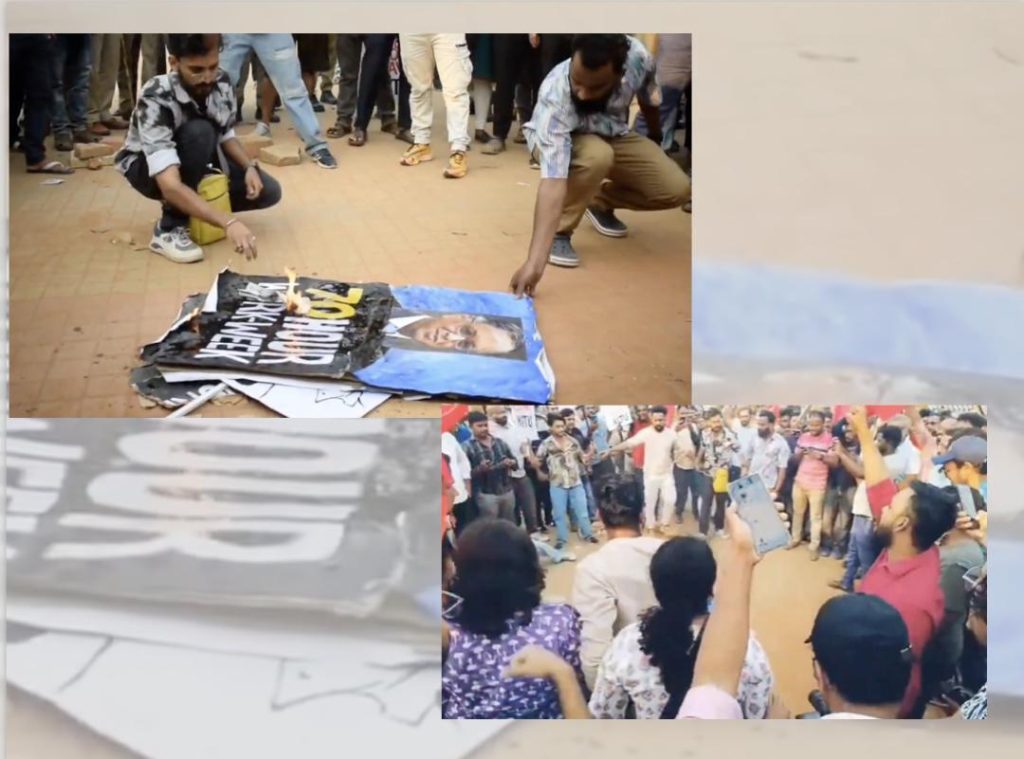
IT Employees Burn Murthy, L&T Chief’s Effigies for Proposing Longer Workweeks
In a bold protest against exploitative work practices, IT employees in Bengaluru recently burnt effigies of Infosys Founder Narayana Murthy and L&T Chairman SN Subrahmanyan. The protest, led by KITU, an IT employees’ union in Karnataka, was a response to the two industry leaders’ proposals to increase workweeks. Murthy had suggested that employees work up to 70 hours a week, while Subrahmanyan advocated for 90 hours of work per week. The employees’ union deemed these proposals as a blatant disregard for their well-being and a further exploitation of their labor.
The protest took place despite the Bengaluru Police’s attempts to stop the employees from proceeding with the demonstration. However, the determined employees managed to successfully burn the effigies, sending a strong message to the industry leaders and the government.
The proposal by Murthy and Subrahmanyan to increase workweeks has sparked widespread outrage among IT employees, who are already under considerable pressure to deliver high-quality work within tight deadlines. The industry is known for its demanding work culture, with employees often working long hours without adequate compensation or recognition.
The IT industry in India has seen rapid growth over the past few decades, with Bengaluru emerging as one of the major hubs. The city is home to many top IT companies, including Infosys, Wipro, and Tata Consultancy Services. The industry’s growth has led to a significant influx of employees from all over the country, who are attracted by the promise of high salaries and a better quality of life.
However, the industry’s growth has also led to a number of issues, including long working hours, low job security, and inadequate employee benefits. Many employees in the IT industry work long hours, often exceeding 12 hours a day, without adequate compensation or recognition. This has led to a number of health issues, including stress, anxiety, and burnout.
The proposal by Murthy and Subrahmanyan to increase workweeks has only added fuel to the fire, with many employees feeling that they are being asked to work even longer hours without any corresponding increase in compensation or benefits. The employees’ union has demanded that the industry leaders and the government take concrete steps to address these issues and improve the working conditions of IT employees.
The protest by KITU is not the first of its kind in the IT industry. In recent years, there have been several instances of IT employees protesting against exploitative work practices and demanding better working conditions. The industry has seen a number of strikes and protests, with employees demanding better salaries, working conditions, and job security.
The Bengaluru Police’s attempt to stop the protest and burn the effigies highlights the tension between the employees and the industry leaders. The police’s actions have been criticized by many, who see them as an attempt to suppress the employees’ voice and silence their demands for better working conditions.
In conclusion, the protest by KITU and the burning of Murthy and Subrahmanyan’s effigies is a strong message to the industry leaders and the government. It highlights the frustration and anger among IT employees who are tired of being exploited and demanding better working conditions. The industry leaders must take concrete steps to address these issues and improve the working conditions of IT employees.




